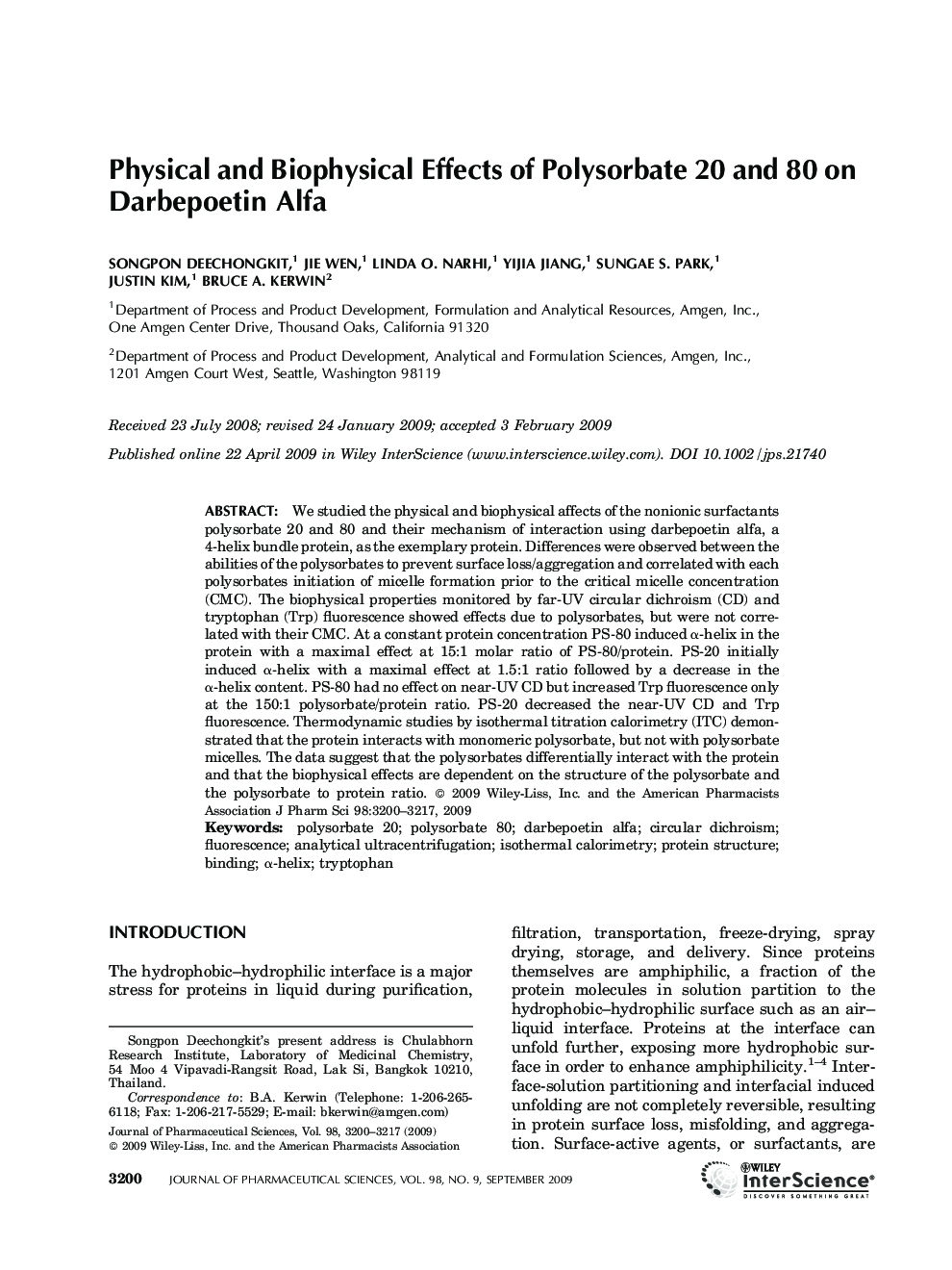| کد مقاله | کد نشریه | سال انتشار | مقاله انگلیسی | نسخه تمام متن |
|---|---|---|---|---|
| 2486831 | 1114395 | 2009 | 18 صفحه PDF | دانلود رایگان |

We studied the physical and biophysical affects of the nonionic surfactants polysorbate 20 and 80 and their mechanism of interaction using darbepoetin alfa, a 4-helix bundle protein, as the exemplary protein. Differences were observed between the abilities of the polysorbates to prevent surface loss/aggregation and correlated with each polysorbates initiation of micelle formation prior to the critical micelle concentration (CMC). The biophysical properties monitored by far-UV circular dichroism (CD) and tryptophan (Trp) fluorescence showed effects due to polysorbates, but were not correlated with their CMC. At a constant protein concentration PS-80 induced α-helix in the protein with a maximal effect at 15:1 molar ratio of PS-80/protein. PS-20 initially induced α-helix with a maximal effect at 1.5:1 ratio followed by a decrease in the α-helix content. PS-80 had no effect on near-UV CD but increased Trp fluorescence only at the 150:1 polysorbate/protein ratio. PS-20 decreased the near-UV CD and Trp fluorescence. Thermodynamic studies by isothermal titration calorimetry (ITC) demonstrated that the protein interacts with monomeric polysorbate, but not with polysorbate micelles. The data suggest that the polysorbates differentially interact with the protein and that the biophysical effects are dependent on the structure of the polysorbate and the polysorbate to protein ratio. © 2009 Wiley-Liss, Inc. and the American Pharmacists Association J Pharm Sci 98:3200–3217, 2009
Journal: Journal of Pharmaceutical Sciences - Volume 98, Issue 9, September 2009, Pages 3200–3217